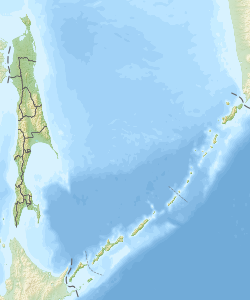| UTC time | 1963-10-13 05:17:59 |
|---|---|
| ISC event | 873239 |
| USGS-ANSS | ComCat |
| Local date | October 13, 1963 |
| Local time | 15:17:59 |
| Duration | 93 seconds |
| Magnitude | 8.5 Mw |
| Depth | 47 km (29.2 mi) |
| Epicenter | 44°49′N149°32′E / 44.81°N 149.54°E |
| Areas affected | Soviet Union |
| Max. intensity | MMI IX (Violent) [1] |
| Tsunami | Yes |
The 1963 Kuril Islands earthquake occurred at 05:17 UTC, on October 13. [2] The earthquake had a moment magnitude (Mw ) of 8.5 and was followed by an Mw 7.8 event seven days later. [3] Both earthquakes triggered tsunamis that were observed around the northern part of the Pacific Ocean.
